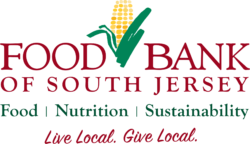What is hunger?
For some, it is a temporary state – a minor inconvenience that is the consequence of a busy day, or a delayed takeout order. For others; however, hunger is a more threatening way of life.

Feeding America, a network of 200 food banks around the country, including the Food Bank of South Jersey, distributed about 10 percent less food in the second quarter of this year compared with the peak of the pandemic last year. But food distribution remains more than 40 percent higher than the same period in 2019. More than 100 of Feeding America’s food banks are reporting rising or continuing elevated need in their communities, as food insecurity continues to permeate households.
Hunger Hitting Home
During 2020, the Food Bank of South Jersey distributed more than 22.5 million pounds of food – the equivalent of over 18 million meals, including one million children’s meals. Hunger hit home, with Burlington, Camden, Gloucester and Salem counties experiencing hunger ratio rises as high as over 60 percent – driving the food-insecurity ratio to 1 in 7 people, and 1 in every 5 children.
With the pandemic in full force throughout 2020 and into 2021, individuals, families and seniors dipped into food insecurity – more than 40 percent of South Jersey residents turning to the Food Bank of South Jersey during 2020 for the first-time food assistance recipients. Stressed and overwhelmed, facing the daily blight of empty refrigerators, more than 170,000 South Jersey neighbors needed food.
Pandemic relief starting to expire As reported in the Burlington County Times article published last week, thousands of South Jersey residents stopped receiving federal jobless benefits this past weekend. What is the impact of this change in benefits? For South Jersey households behind on rent and mortgage payments, an extra $300 each week in benefits served as crucial lifeline to ensure, at the very least, hunger deprivation was kept outside.
“There are very difficult decisions that people have to make, sometimes between paying for food and critical health care,” said Fred C. Wasiak, President and CEO of the Food Bank of South Jersey. “The amplified food insecurity impacting households from Pennsauken to Deptford, Mount Holly to Pitman and Willingboro to Salem remains … as does South Jersey’s resilience to fight for a food-secure tomorrow.”
The Food Bank of South Jersey is committed to fighting hunger in its region – and working to raise awareness about the issue of hunger, advocate for food security policies and promote nutrition and wellness.
